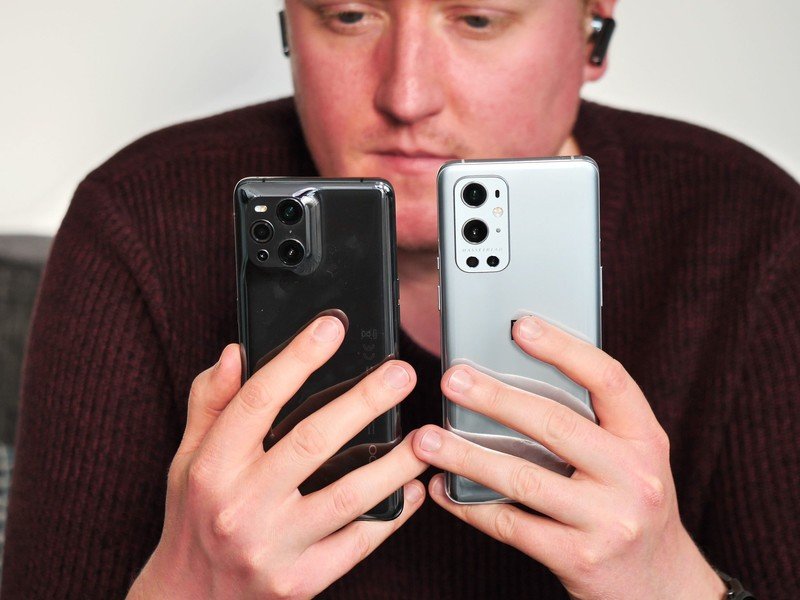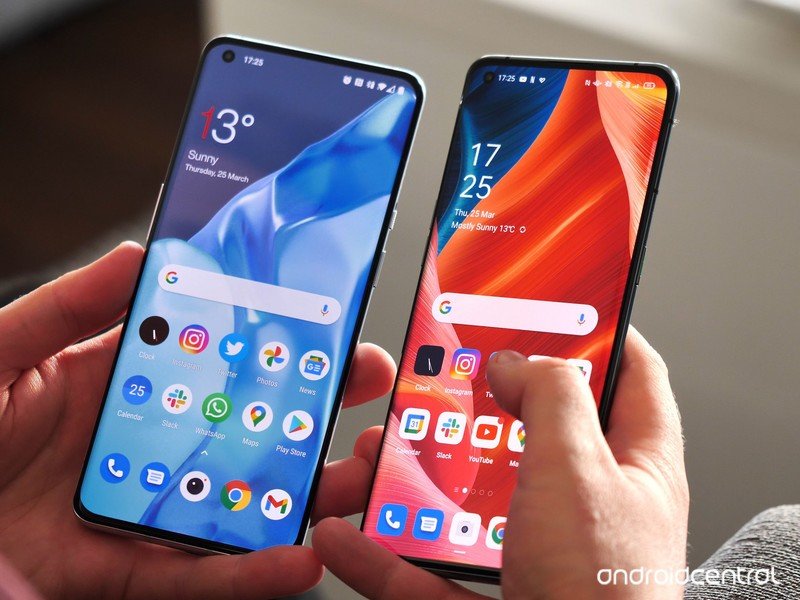
Source: Alex Dobie / Android Central
One of the more surprising Android stories of the past week was the news that, after the two companies combined their research and development efforts a few months back, OnePlus would be undergoing a “deeper integration” with Oppo. The latter, which depending on who you asked over the years, was either OnePlus’s parent company, sister brand, babysitter, casual acquaintance, or completely unrelated competitor, will apparently exert more influence over OnePlus going forward as part of this integration. That’s as a result of the positive impact the two have seen from earlier resource-sharing efforts. (In other words, the strong performance of the OnePlus 9 series, particularly in European markets.)
VPN Deals: Lifetime license for $16, monthly plans at $1 & more
While both OnePlus and Oppo fall under the umbrella of Chinese giant BBK Electronics — whose other tentacles include Vivo and Realme — the exact relationship between the two has been shrouded in some mystery. Over the years, the official line from OnePlus reps has been that it and Oppo merely shared the same investors. However, after leaving the firm, former employees would often speak of a much closer relationship, with some even claiming they were effectively the same company.
Over the years, the similarities between the brands’ products only fuelled speculation, including fairly obvious copy-paste jobs like 2017’s OnePlus 5 and Oppo R11.
However, things were in the past. Going forward, the link between OnePlus and Oppo is going to become a lot more public-facing. And that shouldn’t come as too much of a surprise given the past OnePlus release cycle events. In mainland China, for instance, the OnePlus 9 series run Oppo’s ColorOS out of the box.
OnePlus started as a tiny brand and a darling of smartphone enthusiasts. But as I’ve pointed out before, nobody gets into the phone business aiming to stay small. The past Oppo/OnePlus release cycle clearly demonstrates the firms’ lofty goals for the OnePlus brand — the OnePlus 9 Pro is one of the best Android phones of the moment, beating Oppo’s flagship in terms of charging speeds and camera performance. Looking at the two brands’ combined line-up, you could make a strong case that OnePlus is now the premium brand.
And if OnePlus is to continue to compete at this level, challenging Samsung with its high-end offerings, it makes sense to pool resources with Oppo as much as possible. As OnePlus pushes forward with more advanced optics in its phone cameras, it makes sense for it not to be doing that in a vacuum.
As CEO Pete Lau writes:
With this deeper integration with OPPO, we will have more resources at hand to create even better products for you. It will also allow us to be more efficient, for example, bringing faster and more stable software updates for OnePlus users.
The scale of Oppo could help OnePlus solve its software update problem.
It’s no surprise to see software singled out in this way. Outside of current-year flagship phones, OnePlus does not have a good reputation for its updates’ quality or timeliness. Several major updates have been pulled due to bugs over the past year. OnePlus Nord owners were left waiting almost half a year longer than OnePlus 8 users for their Android 11 upgrade. And that’s to say nothing of the garbage-tier update prospects for phones like the Nord N10 and N100.
In terms of short-term positive impact, this is the biggest area where the scale of Oppo should help.
But Lau’s statement has also raised concerns among fans that the popular OxygenOS UI might be making way for ColorOS at some point in the future — particularly considering Oxygen has already been retired in China. Lau has unambiguously denied that this will be happening, saying, “OxygenOS will remain the operating system for global OnePlus devices outside of the China market.”


Let’s remember, though, that OxygenOS is ultimately just a brand name. The future form of OxygenOS, and its relationship to ColorOS, remains to be seen. And Android Central has heard that another design overhaul will be coming with the OxygenOS 12 release. Writing in his Nord CE review, AC Asia Editor Harish Jonnalagadda says:
OxygenOS 11 delivers a clean interface that doesn’t include too much bloat. That said, OnePlus is flexing its design muscle, and OxygenOS 12 will introduce a radical overhaul of the interface once it rolls around later in the year. So if you’re buying into OnePlus because of the interface, you should wait for a little bit to see just what’s in store with OxygenOS 12.
That doesn’t mean OnePlus will just slap a coat of paint on ColorOS 12 and call it OxygenOS. But it does suggest that, as OnePlus’s software is no longer developed in a bubble, we may see more similarities in terms of feature set and even some design elements between its UI and Oppo’s. Other BBK brands like Vivo and Realme are already moving in this direction.
OxygenOS will live on, but what will it look like?
More ColorOS influence in OxygenOS wouldn’t necessarily be a bad thing. Since the Western versions of Oppo’s software became more polished over the past year, I’ve enjoyed using ColorOS on phones like the Find X2 Pro and Find X3 Pro. But OnePlus also needs to balance the relationship with its fans and their attachment to the way OnePlus phones look and feel. Lau, it seems, is well aware of this:
We will continue launching OnePlus products, holding events (hopefully in person soon), and engaging directly with you for feedback through the same OnePlus channels as before. OnePlus’ commitment to you remains the same.
This week’s “merger” announcement is a big opportunity for OnePlus, which is now far removed from the tiny enthusiast-focused brand behind 2014’s OnePlus One. If it can leverage the extra scale of Oppo in terms of R&D and software development and speed up firmware updates while also keeping its fans happy, it could go from strength to strength in 2022.
But as it navigates its integration with Oppo, it should be cautious not to lose even more of the magic that made it a fan-favorite brand in the first place.
We may earn a commission for purchases using our links. Learn more.